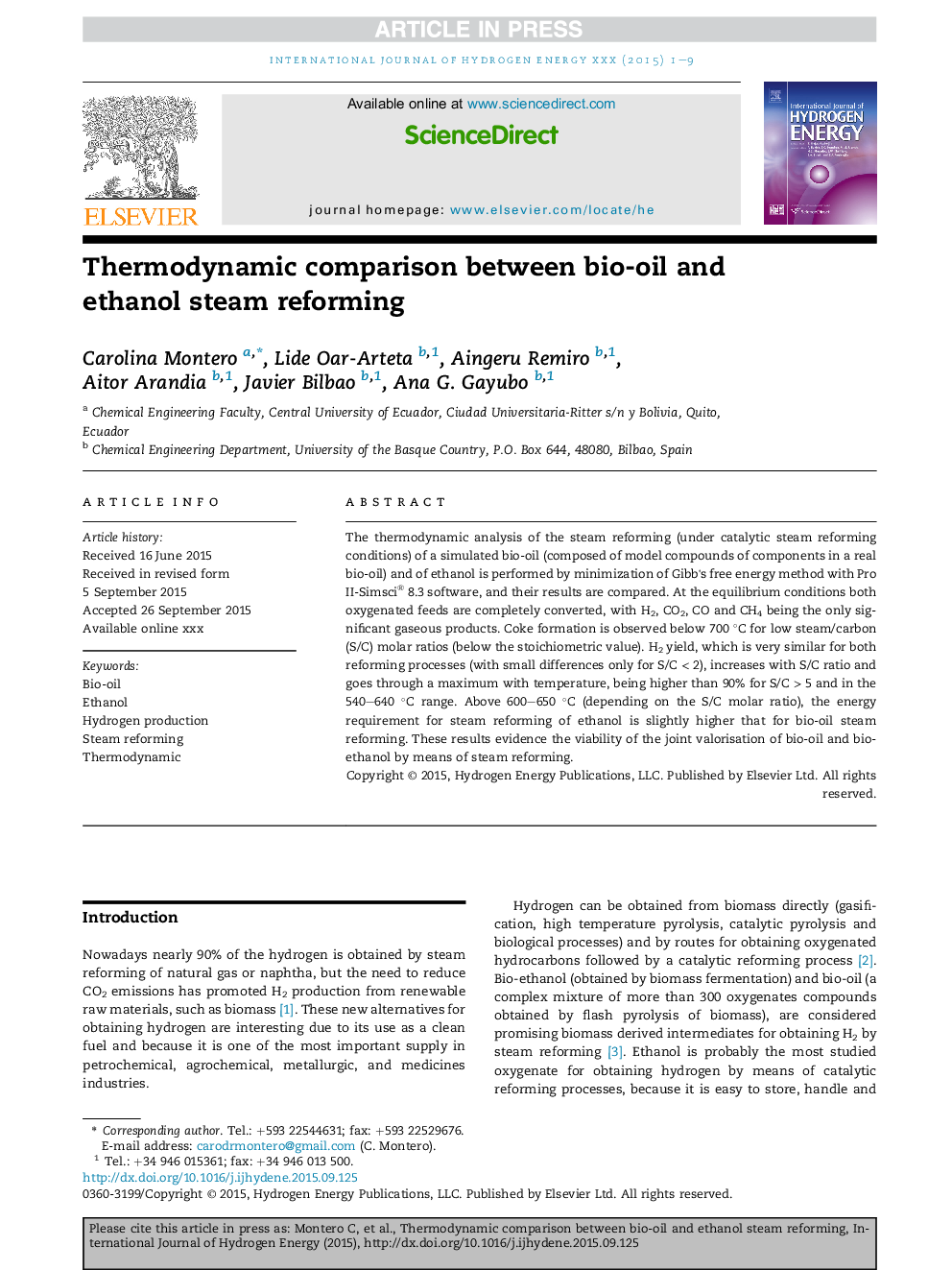| کد مقاله | کد نشریه | سال انتشار | مقاله انگلیسی | نسخه تمام متن |
|---|---|---|---|---|
| 7713111 | 1497427 | 2015 | 9 صفحه PDF | دانلود رایگان |
عنوان انگلیسی مقاله ISI
Thermodynamic comparison between bio-oil and ethanol steam reforming
ترجمه فارسی عنوان
مقایسه ترمودینامیکی رنگرزینگ بخار روغن زیتون و اتانول
دانلود مقاله + سفارش ترجمه
دانلود مقاله ISI انگلیسی
رایگان برای ایرانیان
کلمات کلیدی
روغن زیتون، اتانول، تولید هیدروژن، اصلاح بخار، ترمودینامیک،
موضوعات مرتبط
مهندسی و علوم پایه
شیمی
الکتروشیمی
چکیده انگلیسی
The thermodynamic analysis of the steam reforming (under catalytic steam reforming conditions) of a simulated bio-oil (composed of model compounds of components in a real bio-oil) and of ethanol is performed by minimization of Gibb's free energy method with Pro II-Simsci® 8.3 software, and their results are compared. At the equilibrium conditions both oxygenated feeds are completely converted, with H2, CO2, CO and CH4 being the only significant gaseous products. Coke formation is observed below 700 °C for low steam/carbon (S/C) molar ratios (below the stoichiometric value). H2 yield, which is very similar for both reforming processes (with small differences only for S/C < 2), increases with S/C ratio and goes through a maximum with temperature, being higher than 90% for S/C > 5 and in the 540-640 °C range. Above 600-650 °C (depending on the S/C molar ratio), the energy requirement for steam reforming of ethanol is slightly higher that for bio-oil steam reforming. These results evidence the viability of the joint valorisation of bio-oil and bio-ethanol by means of steam reforming.
ناشر
Database: Elsevier - ScienceDirect (ساینس دایرکت)
Journal: International Journal of Hydrogen Energy - Volume 40, Issue 46, 14 December 2015, Pages 15963-15971
Journal: International Journal of Hydrogen Energy - Volume 40, Issue 46, 14 December 2015, Pages 15963-15971
نویسندگان
Carolina Montero, Lide Oar-Arteta, Aingeru Remiro, Aitor Arandia, Javier Bilbao, Ana G. Gayubo,
